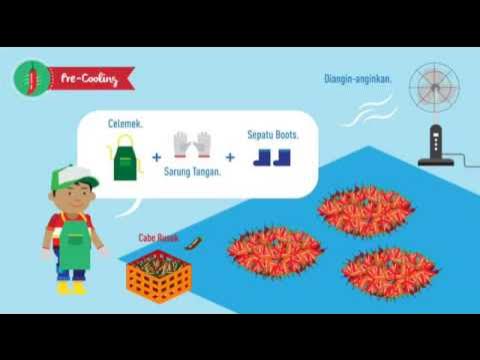Pembersihan, Sortasi, dan Grading
Summary
TLDRThis lecture discusses the critical processes of cleaning, sorting, and grading agricultural products, specifically focusing on post-harvest handling in agribusiness. It explains the importance of removing foreign materials to ensure product cleanliness, categorizing items based on quality and commercial value. Various methods for cleaning fruits and vegetables are outlined, including washing and sanitizing techniques, as well as the significance of sorting for maintaining quality standards. The lecture also highlights the benefits of grading, which guarantees fair pricing and consistent quality for producers and consumers alike, ultimately enhancing market efficiency.
Takeaways
- 😀 Understanding the fundamental principles of juvenile delinquency is essential for addressing its root causes.
- 😢 The lack of community oversight can significantly contribute to the rise in juvenile delinquency.
- 📊 Trends indicate an increase in certain types of offenses among youth, highlighting the need for targeted interventions.
- 🏫 Schools play a crucial role in identifying at-risk youth and implementing preventative measures.
- 🤝 Community programs that engage youth can help reduce delinquent behavior by providing positive outlets.
- 👥 Parental involvement is key; parents should actively participate in their children's lives to prevent delinquency.
- 📚 Educational initiatives aimed at teaching conflict resolution and coping skills can reduce incidents of delinquency.
- 🛠️ Collaboration between law enforcement and community organizations is vital for effective prevention strategies.
- 🔍 Identifying warning signs early can help in addressing issues before they escalate into delinquent behavior.
- 🚨 It's important to shift the narrative around juvenile offenders from punishment to rehabilitation and support.
Q & A
What is the main focus of the video regarding the North Sea Port?
-The video discusses the transition of the North Sea Port to a sustainable port, highlighting industry partnerships, energy transition projects, and logistical activities.
What are the key initiatives mentioned in the video for achieving sustainability?
-Key initiatives include collaboration with industries to reduce emissions, investment in renewable energy sources, and implementing innovative logistical solutions.
How does the North Sea Port aim to address energy transition?
-The North Sea Port aims to address energy transition by exploring alternative energy sources, enhancing energy efficiency, and facilitating the shift towards greener logistics.
What role do industry partnerships play in the port's sustainability efforts?
-Industry partnerships are crucial as they enable resource sharing, knowledge exchange, and collective action towards achieving sustainability goals.
What logistical activities are being prioritized in the port's transition plan?
-The port is prioritizing activities that optimize transportation methods, reduce carbon footprints, and integrate sustainable practices in supply chain management.
Can you describe the expected outcomes of the port's sustainability initiatives?
-Expected outcomes include reduced greenhouse gas emissions, improved operational efficiency, and enhanced competitiveness in the global market.
How does the video address the challenges of transitioning to sustainability?
-The video acknowledges challenges such as financial investment requirements, technological advancements needed, and the necessity for regulatory support.
What is the significance of renewable energy in the port's future plans?
-Renewable energy is significant as it will play a pivotal role in reducing dependency on fossil fuels and achieving long-term sustainability goals.
What measures are suggested for enhancing community involvement in sustainability efforts?
-Measures include engaging local stakeholders, promoting awareness programs, and involving communities in decision-making processes related to port activities.
In what ways does the port plan to measure the success of its sustainability efforts?
-The port plans to measure success through key performance indicators (KPIs) related to emission reductions, energy efficiency improvements, and stakeholder satisfaction.
Outlines

This section is available to paid users only. Please upgrade to access this part.
Upgrade NowMindmap

This section is available to paid users only. Please upgrade to access this part.
Upgrade NowKeywords

This section is available to paid users only. Please upgrade to access this part.
Upgrade NowHighlights

This section is available to paid users only. Please upgrade to access this part.
Upgrade NowTranscripts

This section is available to paid users only. Please upgrade to access this part.
Upgrade Now5.0 / 5 (0 votes)





